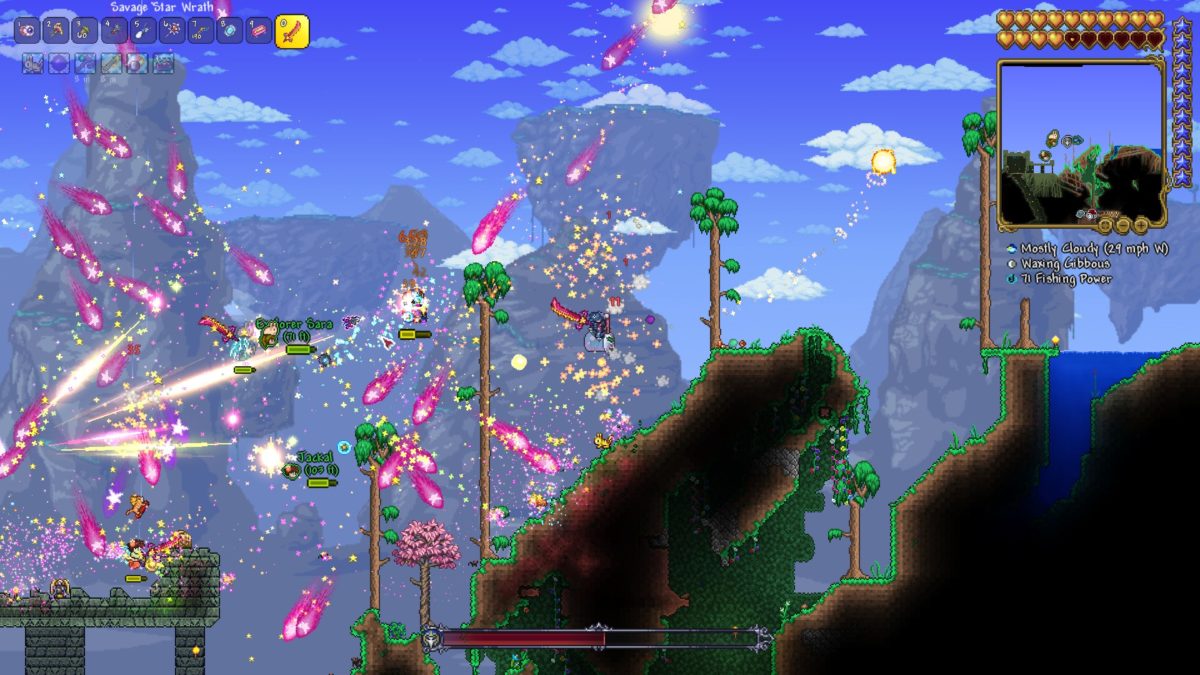Terraria’s final update is here, bringing an end to a journey launched in 2011 and closing development on a game much more complex and full of content than it was then. Terraria is one of my favorite games of all time. I’ve been super excited about the 1.4 update. Let’s talk about it.
Previous Terraria updates have traditionally lengthened the game by adding to its progression chain. 2011’s 1.1 Update added Hard Mode, which offered a new tier of boss fights and item progression, nearly doubling the game’s playtime. The 1.2 update, dropped in September of 2013, added four new bosses, including a new final boss, the Golem, and the jungle temple it lives in, alongside a revamped, hard-mode dungeon and a plethora of additional features. Furthering the pattern, 2015’s 1.3 update again added a new final boss, the Moon Lord, a pre-Moon Lord Lunar Invasion event, and a new tier of post-Golem content.
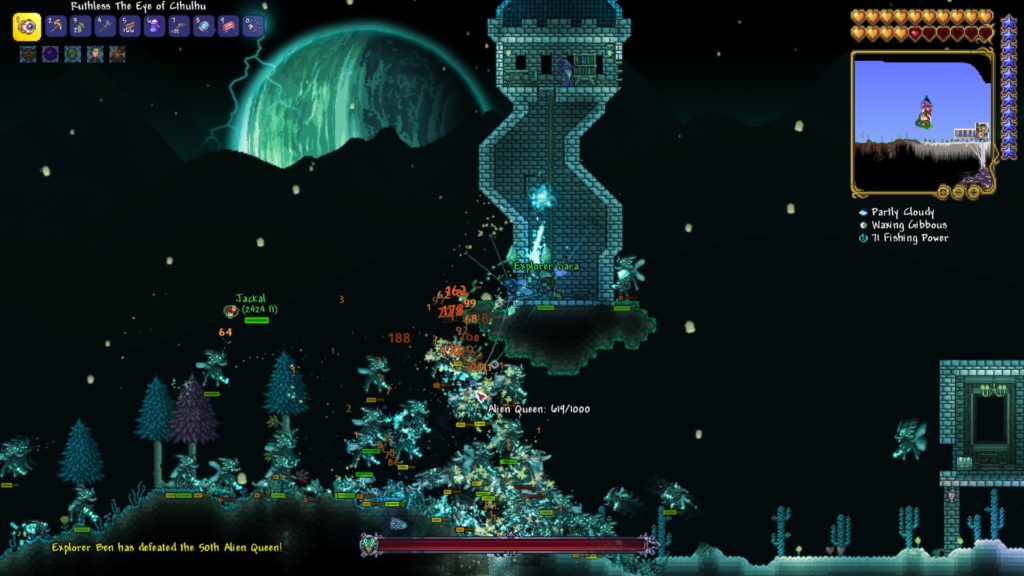
Terraria’s 1.4 update bucks this trend of game-lengthening, instead acting as a thoroughly-applied coat of polish for a title already stuffed full with years of content additions. To be fair, previous Terraria updates have been more than simple content appendices at the tail end of the game. Each update since its original May 2011 release has iterated upon nearly all corners of the game, increasing mobility, player power, the considerable stockpile of building blocks and furniture, and adding additional mechanics. 1.1 added wiring, 1.2 added 8 new friendly NPCs and opened the game to increased mobility through an expanded set of wings and grappling hooks, and 1.3 added fishing, expert mode, and increased customization through paints and dyes.
The 1.4 update adds new bosses, biomes, and enemies, but its premiere achievement is fleshing out the game through additional side content. Some additions, like emotes, dynamic weather, and village pets, are cute pieces of content that provide little bonuses to an already fun game. Some of the more interesting additions are those that streamline the game and make it more accessible to new players.
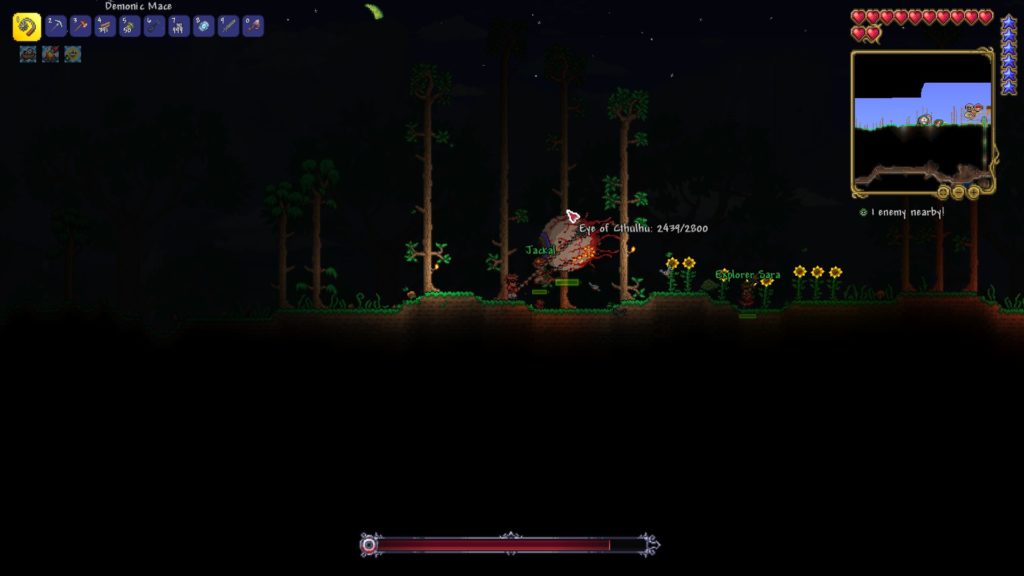
If I had to name a key downside to Terraria, it’s the cryptic nature of its progression system. Longtime players might raise an eyebrow at such an assertion; anyone who’s played the game through more than once or twice probably knows its succession of bosses by heart. But learning that succession the first time can be tough, especially alone. The game’s previous updates have provided players with hints of what comes next, but those dropping in without experience might have to look elsewhere to find out which boss they should fight first, what gear they might want to have, and where each fight has to take place.
Terraria 1.4 improves on this with a few key changes. Some minor additions, like displaying the next achievement a player should strive for in the inventory menu, help by adding a sometimes-necessary visual indicator of the player’s place in the game’s linear progression. Wiki surfers among us may find it redundant, but it might make a difference to the walkthrough-averse. The game’s new bestiary is a similar in-game depiction of enemies and drop chances that takes some guesswork out of the amount of content remaining in the game. Being able to see that there’s a new goal to reach or another boss to fight is helpful in a game without a history of clearly telegraphing its next steps.

Even more minor additions like the Finch Staff seem simple (it’s an item that summons a pet bird to defend you in combat), but they represent a foray into further accessibility; summoning familiars was previously an element of play saved for later game, much like grappling hooks required the collection of a rare drop before the addition of gem hooks in the 1.2 update made vertical navigation a breeze.
TOWNS AND HAPPINESS
A big part of Terraria’s progression is the collection of NPC characters. These characters come with their own pools of sold items and utilities; the merchant sells basic items, the mechanic sells wiring, the nurse will heal you for gold, etc. New NPCs move in as you unlock them, provided there are enough available rooms for them to stay in. Until now, that’s all that’s mattered; NPCs will gladly take up residence in tiny, cramped cupboards packed into your attic. After all, they’re living rent-free; they can’t complain, right? At least, they were living rent-free, until the addition of 1.3’s Tax Collector.
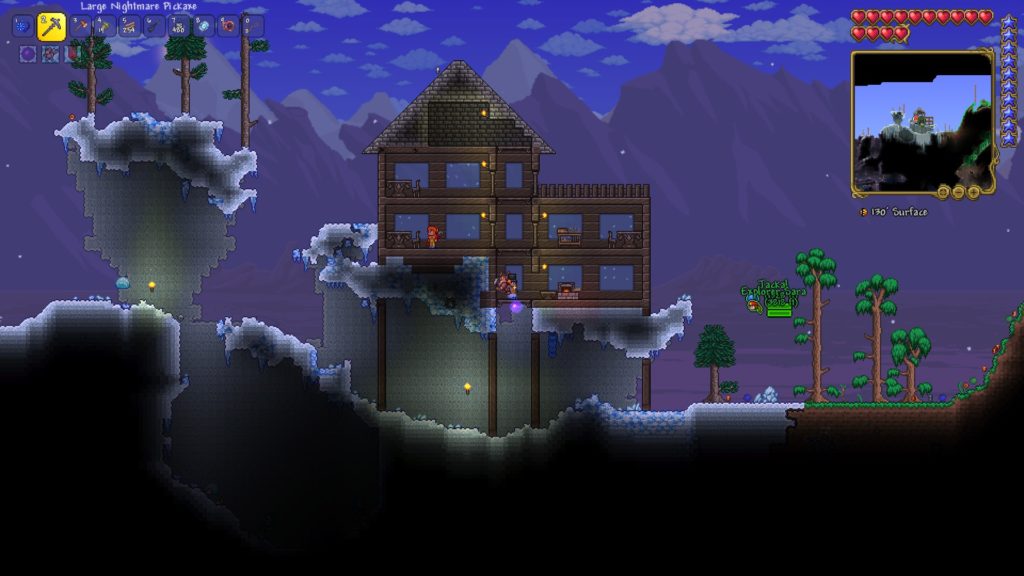
Now, the game’s NPCs feel freer to make their feelings heard. They like living in certain biomes, and dislike others. They consider some of their neighbors friends, and there are a few they’re not fond of. Perhaps most significantly, they’re no longer cool with being squished together into a few square feet in the corner. If you refuse to abide by their preferred living conditions, the villagers will act as they always have, but they’ll charge you a premium for their goods and services.
The other reason to provide adequate housing for NPCs in 1.4 is a new addition: the Pylon network. Pylons can be purchased from any happy vendor, and they come in nine flavors; eight biome-specific Pylons and one special secret one unlocked later. When placed in the correct biome with at least two NPCs nearby, pylons will allow you to teleport between them, acting as a specialized fast travel system. There are a few exceptions to the pylon model; they can’t be used during invasions, they can only be teleported to as long as you’re standing near another one, and they won’t work if they’re not near at least two NPCs. For this purpose, town pets also count as NPCs.
Oh, by the way: there are town pets now. Sold by the new Zoologist NPC, players can invite a dog, a cat, and a bunny into their new towns. The pets are counted as villagers by the pylon network, and, yes, you can pet them.
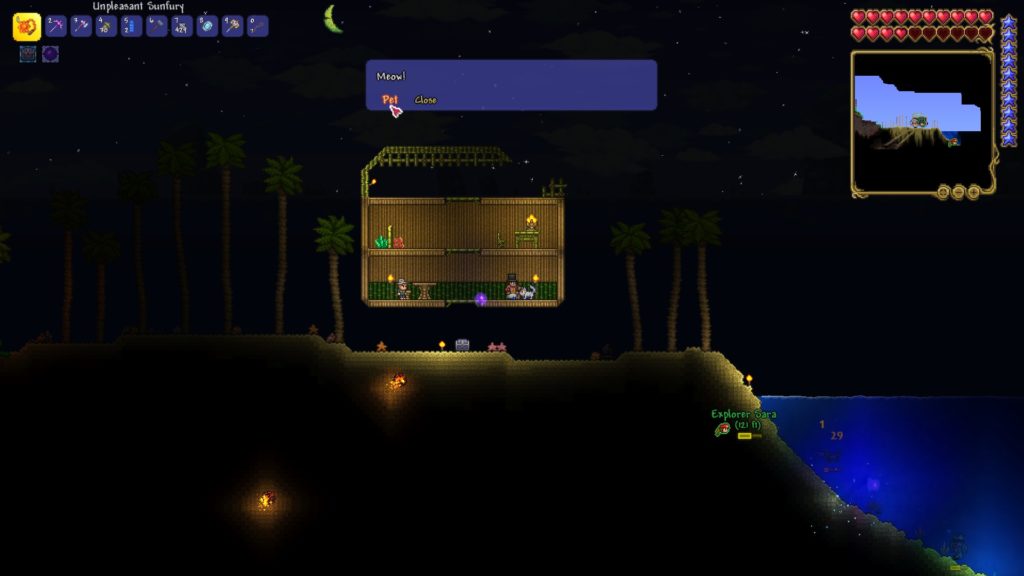
MASTER MODE
I’ve shelled over 800 hours in Terraria, but nearly all of those have been in the game’s normal mode. The 1.3 update saw the introduction of Expert Mode, which doubles the health of standard enemies and adds combat mechanics to make boss fights significantly harder. 1.4’s answer to the experts who have bested this difficulty is Master Mode, which further cranks up combat difficulty.
I haven’t touched Master Mode yet. My friends who have tell me they’re enjoying it, but they’re also masochists and/or good at Terraria.
JOURNEY MODE
Terraria‘s other new mode, Journey Mode, is harder to explain. It sits in the world creation menu alongside Normal, Expert, and Master Modes, but it’s not quite similar to any of them. When the game’s developers first teased its name, fans theorized it could be an easy difficulty, a story-focused version of the game, or a creative mode. It’s not completely any of those.
Of the listed suggestions, Journey Mode is closest to a creative mode, but instead of a standard infinite creation gametype (like Minecraft), Journey Mode doesn’t give you free reign over creation immediately. You’ll be able to spawn as many blocks and items as you want, but only if you’ve already collected a certain number of those blocks and items and submitted them for “research”.

The result is a sort of gated creative system that locks your ability to infinitely create behind the game’s standard progression. Once you’ve collected (and submitted) a specific number of each block or item, you’ll be able to spawn it infinitely at will. It’s a system I simultaneously enjoy for its creative novelty and feel somewhat uncomfortable actually experiencing. It’s not that I dislike the core idea or even the execution, but instead that the gameplay loop is kinda… odd. Moving between tasks and stages isn’t as fluid as the base game, and I haven’t really been able to properly adapt to Journey Mode’s unique playstyle, even over longer play sessions.
Alongside its creative spawning mechanics, Journey Mode offers a number of additional “power tools”, such as the ability to change the time and weather. Other tools include options to change enemy spawn rates, difficulty (journey, normal, expert, or master), and whether or not evil (corruption, crimson, hallow) biomes spread. You can also opt into godmode and extend the maximum placement distance for blocks and items.
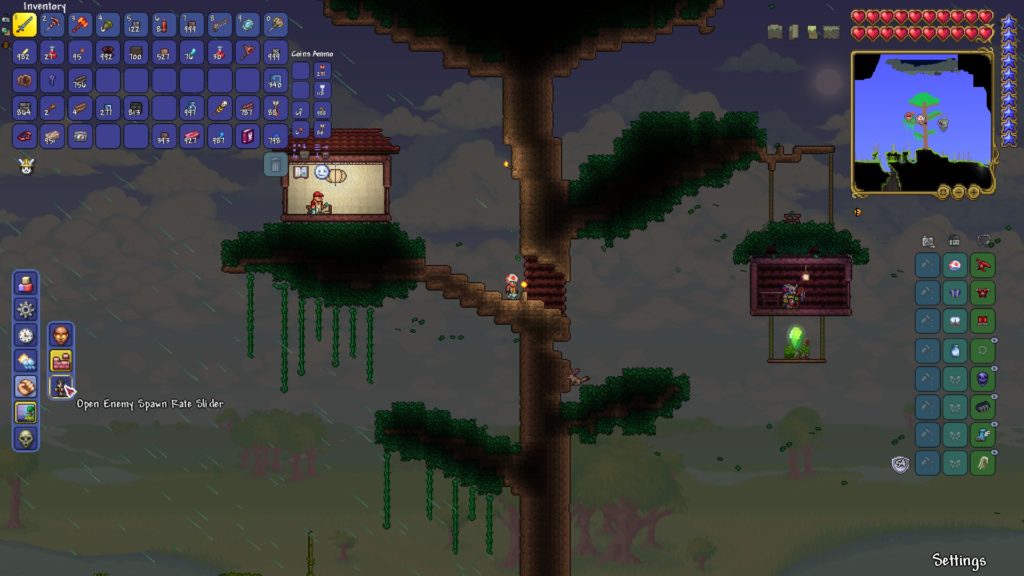
…AND THE REST
I haven’t covered in-depth everything included in Terraria’s 1.4 update. In the leadup to release, the upcoming content drop became well-known for its 50 page changelog. Among the additional features in this update are a golf mechanic, new weather, new biomes (and a “mini-biome”, the graveyard), new bosses, new trees, new weapons, equipment, and furniture, new music, and more. Altogether, an absolutely massive addition to the game that serves to further polish what was, and has been, one of my favorite titles of all time.
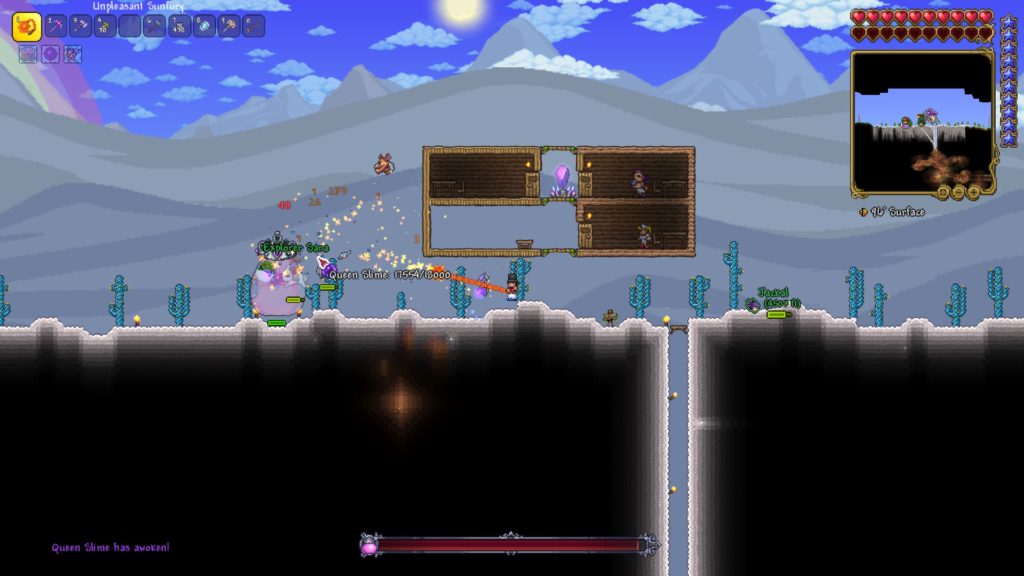
Terraria is $10 full price on Steam. It regularly goes on sale for $2.50. I’ve spent over 800 hours playing this game. I don’t know that I’d be able to find one that I recommend more.
Some of my favorite features I declined to include above:
- Doors now open automatically
- Bosses & invasions have nice big health bars that appear at the bottom of the screen
- Texture pack support
- Official Steam support for tModLoader
